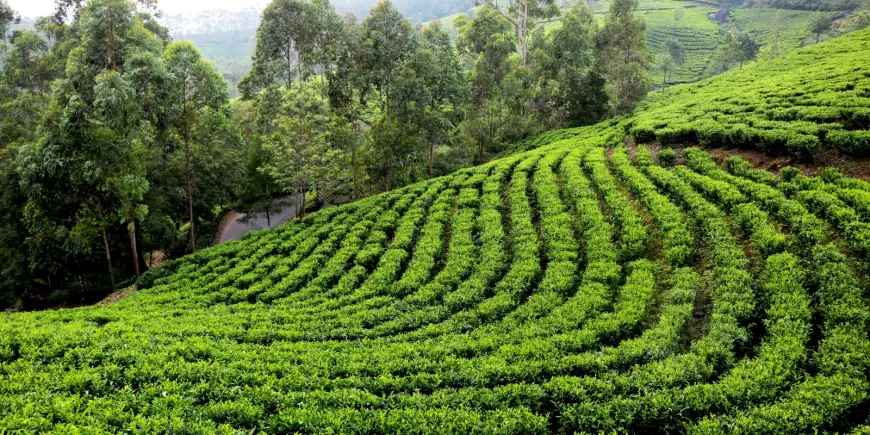5 Must-see Attractions In The Seven Sisters Tour Package

The Seven Sisters of India, including Arunachal Pradesh, Assam, Manipur, Meghalaya, Mizoram, Nagaland, and Tripura, are a treasure house of natural splendour, cultural heritage, and alternative adventures. For those who wish to explore India's unscathed landscapes and rich culture, a North East India tour package is a perfect option. Every state has its own beauty, and collectively they create an experience that one will never forget amidst the northeast's rolling hills, waterfalls, monasteries, tribal villages, and wildlife sanctuaries.
If you are planning this trip, there are certain destinations you simply cannot miss. Here is a closer look at five must-see attractions that will elevate your Seven Sisters adventure.
- Kaziranga National Park – Assam’s Pride
Situated in Assam, Kaziranga National Park is a World Heritage Site recognised by UNESCO and one of the most iconic wildlife sanctuaries in India. Famous for providing habitat to two-thirds of the total one-horned rhinoceros population in the world, it provides an unadulterated view of the biodiversity of the area.
A jeep or elephant safari here is itself an adventure. You are likely to see swamp deer, wild water buffalo, Asiatic elephants, and, if you are lucky, the very elusive Royal Bengal tiger. It is also a paradise for birdwatchers, with migratory birds such as the lesser white-fronted goose and greater adjutant stork making seasonal appearances.
Kaziranga is more than about wildlife; it is a tranquil sojourn into nature, with tall elephant grass, calm wetlands, and the mighty Brahmaputra River flowing nearby. If you are there between November to April, then you will witness the park in its best energetic form.
- Tawang Monastery – Arunachal Pradesh’s Spiritual Jewel
Located at an altitude of more than 10,000 feet, the Tawang Monastery is India's largest Buddhist monastery and the world's second-largest. Constructed in the 17th century, it is not only a religious centre but also a site of great cultural and historical importance for Arunachal Pradesh's Monpa people.
As you enter the imposing prayer hall of the monastery, which is decorated with fine murals and golden sculptures, you are immediately struck. The centrepiece is the 8-meter-high golden statue of Lord Buddha, exuding an aura of tranquillity. Besides the spiritual atmosphere, the site itself presents one with panoramic views of the Tawang River valley and the surrounding snow-covered peaks.
A visit to Tawang also involves immersing oneself in the region's distinct mixture of Indian and Tibetan culture. The Losar Festival, celebrated here in February or March, introduces a splash of colour, sound, and dance into the peaceful atmosphere.
- Living Root Bridges – Meghalaya’s Natural Marvel
Meghalaya, or "abode of clouds," is renowned for having one-of-a-kind living root bridges, especially around Cherrapunji and Mawlynnong. These amazing bridges are constructed of aerial roots of rubber fig trees, which, over time to create strong pathways that can resist the area's frequent heavy rains.
The most celebrated is the double-decker root bridge at Nongriat village. It is accessed after a hike down over 3,000 steps, but the experience is well worth it. To stand on a bridge that has been alive for centuries is a dreamlike experience; it is like nature chose to become an architect.
Along the way, you will encounter emerald-green forests, crystal-clear streams, and miniature waterfalls. If you wish to avoid tourists, going in the winter months from November to February would be best.
- Loktak Lake – Manipur’s Floating Paradise
Commonly referred to as the "lifeline of Manipur," the Loktak Lake is northeast India's largest freshwater lake and also famous for its intriguing phumdis, floating islands of soil and vegetation. These naturally floating islands house distinct flora, fauna, and even small fishing villages.
One of the prime attractions here is the Keibul Lamjao National Park, a floating national park in the entire world and the last natural reserve of the critically endangered Sangai deer. A boat ride across Loktak Lake is like sailing through a painting, with the hillocks in the vicinity creating a beautiful background.
Sunrise and sunset at Loktak are nothing less than magical; the water shines in hues of gold and pink, and the tranquillity of the moment invites you to sit a little longer. The lake can be best explored between October and March, when the weather is nice and calm water prevails.
- Dzukou Valley – Nagaland’s Floral Wonderland
Dzukou Valley, which is situated on the border of Nagaland and Manipur, is popularly called the "Valley of Flowers of the Northeast." Renowned for its green rolling hills and seasonal flowers, it is a walker's dream and one of the most scenic spots in the Seven Sisters.
The valley is brought to life in the summer when the elusive Dzukou lily blooms, painting the scene like a painter's palette. Treks here are moderately arduous but well worth it, with views that go on as far as the eye can travel. The paths are sprinkled with streams, caves, and vantage points where you can just stop and enjoy the stillness.
An overnight camp within Dzukou is a must for adventure seekers; the sky at night here is incredibly transparent, and thus it is a stargazer's paradise.
Closing Thoughts
The Seven Sisters are more than just a travel destination; they are a journey into a world that remains untouched by the chaos of modern cities. From the wilderness of Kaziranga to the spiritual serenity of Tawang, the living wonders of Meghalaya to the floating magic of Loktak, and the untouched beauty of Dzukou Valley, each stop adds a unique chapter to your travel story.
If you are willing to book North East India tour packages, visit the website of Bespoke India Holidays, which will make your vacation smooth.
What's Your Reaction?
 Like
0
Like
0
 Dislike
0
Dislike
0
 Love
0
Love
0
 Funny
0
Funny
0
 Angry
0
Angry
0
 Sad
0
Sad
0
 Wow
0
Wow
0
















































